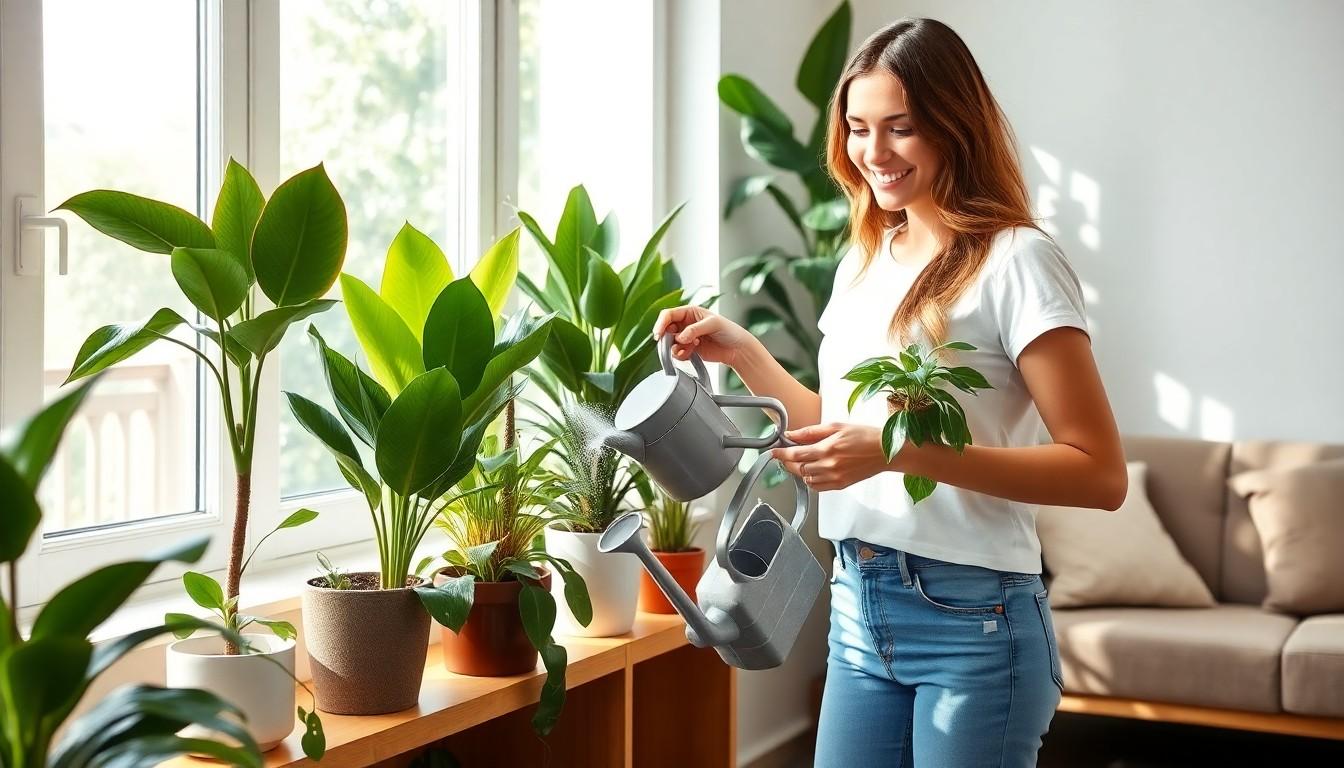Physical Address
304 North Cardinal St.
Dorchester Center, MA 02124

Imagine a world where your home smells fresh and feels like a serene jungle retreat, all thanks to a few leafy companions. Indoor plants not only bring a splash of green into your life but also serve as natural air purifiers. Yes, those little green machines can filter out toxins and improve air quality while you sip your coffee and pretend to be a plant parent.
But wait, there’s more! These botanical buddies are like the superheroes of your living room, battling dust and pollutants while requiring minimal effort. With the right selection, they’ll thrive even if your thumb isn’t exactly green. So, if you’re tired of breathing stale air and want to elevate your space’s vibe, it’s time to embrace the power of indoor plants. Let’s dive into the leafy goodness that can transform your home into a healthier, happier haven.
Indoor plants serve multiple roles in enhancing living spaces. These plants significantly improve air quality while offering an aesthetically pleasing environment.
Indoor plants naturally filter toxins from the air. Studies indicate that specific species, such as the snake plant and spider plant, can eliminate common pollutants like formaldehyde and benzene. The process of photosynthesis allows them to absorb carbon dioxide and release oxygen. A study by NASA identified 15 effective plants for improving indoor air quality. Humans often experience reduced levels of airborne contaminants in spaces with greenery. They also contribute to increased humidity levels, promoting a healthier atmosphere overall.
Indoor plants also positively impact mental well-being. Studies show that having plants in a workspace or home increases productivity and reduces stress levels. Connection to nature, even indoors, helps individuals feel more relaxed and focused. Engaging with plants promotes mindfulness, enhancing life satisfaction. A survey revealed that 78% of respondents found their mood improved after caring for indoor plants. Enhanced air quality links to improved cognitive function and lower anxiety. Spending time around greenery encourages better emotional health, leading to a more vibrant living environment.

Several indoor plants effectively purify air, improving overall home environments. These plants serve as natural air filters, reducing toxins, and enhancing aesthetic appeal.
Snake plant stands out for its hardiness and air-purifying qualities. Known for tolerating low light, it filters out formaldehyde, benzene, and other toxins. With upright leaves and various color patterns, it adds a modern touch to any room. This species emits oxygen at night, improving air quality while you sleep. Scientific studies, including those from NASA, underscore its effectiveness as an air purifier. The snake plant thrives on minimal water, making it ideal for busy individuals.
Peace lily is cherished for its beauty and pollution-reducing capacity. With glossy green leaves and elegant white blooms, it enhances indoor aesthetics. This plant effectively removes toxins such as ammonia and mold spores from the air. Peace lilies also thrive in low-light environments, requiring only occasional watering. Its ability to signal when it needs water, by drooping leaves, makes maintenance simple. Research shows that peace lilies significantly improve indoor air quality, promoting a healthier living environment.
Spider plant is recognized for its adaptability and air-cleaning properties. Preferring bright, indirect light, this plant excels at eliminating pollutants like formaldehyde and xylene. Its arching green and white striped leaves create a vibrant presence in any room. Spider plants produce offshoots, or “babies,” which can be propagated easily. Regular watering and occasional misting keep them healthy and thriving. Studies highlight their ability to purify air, contributing to overall well-being and comfort indoors.
Caring for indoor air purifying plants requires attention to their specific needs. Proper light and watering enhance their growth and air purification capabilities.
Different plants require varying light amounts to thrive. For instance, snake plants tolerate low light well, making them suitable for shaded areas. Peace lilies prefer indirect sunlight, while spider plants thrive in bright, indirect light. Providing adequate light not only promotes healthy foliage but supports efficient pollutant removal. Observing plants can help gauge their light needs. Yellowing leaves often indicate too much light, whereas stretching toward the light source suggests insufficient exposure. Adjusting their locations based on these signs can improve their health and purifying abilities.
Watering practices depend on the plant species and environmental conditions. Snake plants, for example, prefer dry soil, requiring watering only when the top inch feels dry. Peace lilies like consistent moisture, so checking the soil frequently is essential. Spider plants enjoy regular watering but can tolerate slight drying between waterings. Overwatering presents risks like root rot, leading to diminished air purification effectiveness. Checking soil moisture levels before watering ensures plants receive appropriate hydration. Establishing a routine can help maintain optimal soil moisture for air-purifying plants.
Research supports the idea that indoor plants improve air quality. Several scientific studies have documented this phenomenon, highlighting specific benefits tied to particular plants.
NASA conducted an influential study identifying 15 plants known for their air-purifying capabilities. The snake plant, peace lily, and spider plant emerged as top performers, effectively filtering common household pollutants like formaldehyde, benzene, and ammonia. Additional research indicated that certain plants can reduce specific volatile organic compounds by up to 87% within 24 hours. Other studies showcased that indoor plants contribute to an enhanced sense of well-being and reduced stress levels among individuals, with one survey revealing that 78% of respondents reported improved moods following interaction with plants. These findings underline the substantial impact indoor plants have on both air quality and mental health.
Despite positive findings, several limitations exist within indoor plant research. Many studies focus on controlled environments rather than real-world settings, which may limit generalizability. Variables such as light levels, plant size, and species diversity often remain unaccounted for, affecting outcomes. Additionally, results can vary based on the pollutants targeted and their concentrations. Smaller sample sizes in some studies make it difficult to draw definitive conclusions. Ultimately, ongoing research is necessary to explore these factors and strengthen the understanding of indoor plants’ role as air purifiers.
Indoor plants offer more than just aesthetic appeal; they play a crucial role in enhancing air quality and promoting well-being. By choosing the right species like the snake plant, peace lily, or spider plant, anyone can create a healthier home environment. These plants not only filter harmful pollutants but also contribute to improved mood and reduced stress levels.
With minimal care requirements, incorporating indoor plants into daily life becomes an easy and effective way to boost both physical and mental health. Embracing these natural air purifiers can transform any living space into a vibrant sanctuary, supporting a lifestyle that values well-being and tranquility.